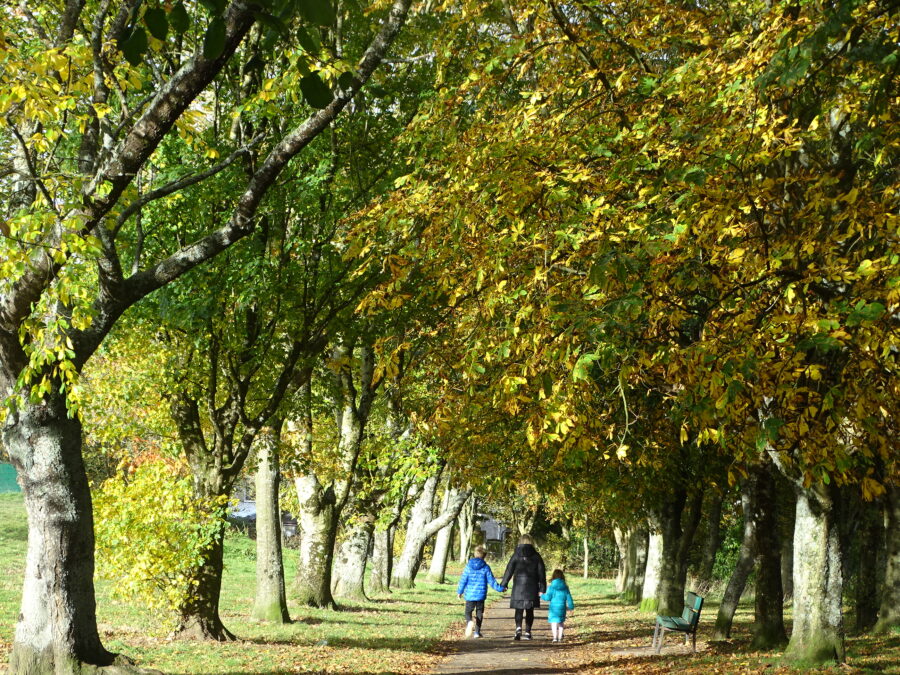
Beaumont Park has a very distinct heritage especially with its Big House history and demesne landscape. It makes for interesting research to try to match up the present day landscape with the former landscape.
William Beamish:
The Dictionary of Irish Biography outlines that William Beamish (1760–1828), was born on 10 May 1760, at Willsgrove, Co. Cork. Like his father he joined the navy but soon after he joined the army. He served in the war of American independence as adjutant of the British army’s 19th Regiment.
William departed the army and became a merchant in Cork. He was created a Freeman of the city on 23 February 1790.
In January 1792 William and William Crawford forged a partnership with the brewers Digby O’Brien and Richard Barrett. Their brewery was in business since the early seventeenth century, but was a small business.
The new Porter Cork Brewery became one of the largest Irish breweries.In the seven years from 1793 to 1800, the brewery’s output increased from 12,003 barrels a year to 63,230. By 1800 the O’Brien and Barrett names had passed away or retired and the name Beamish and Crawford came into being. The beer could rival in terms of quality and price beer imported from London.
In 1789, William married Anne Jane Margaret (1769–1852), only daughter of Robert De La Cour of Mallow. They had eleven sons and two daughters.
In 1792, when Beamish & Crawford was first established, William Beamish resided at Beaumont House, which was then a magnificent period residence situated on Beaumont Hill. The name Beaumont is the French derivative of Beamish meaning a beautiful view from the mountain or a beautiful view.

William died on 17 April 1828 and he is buried with his wife in the parish of Desert Serges near Enniskeane in West Cork.
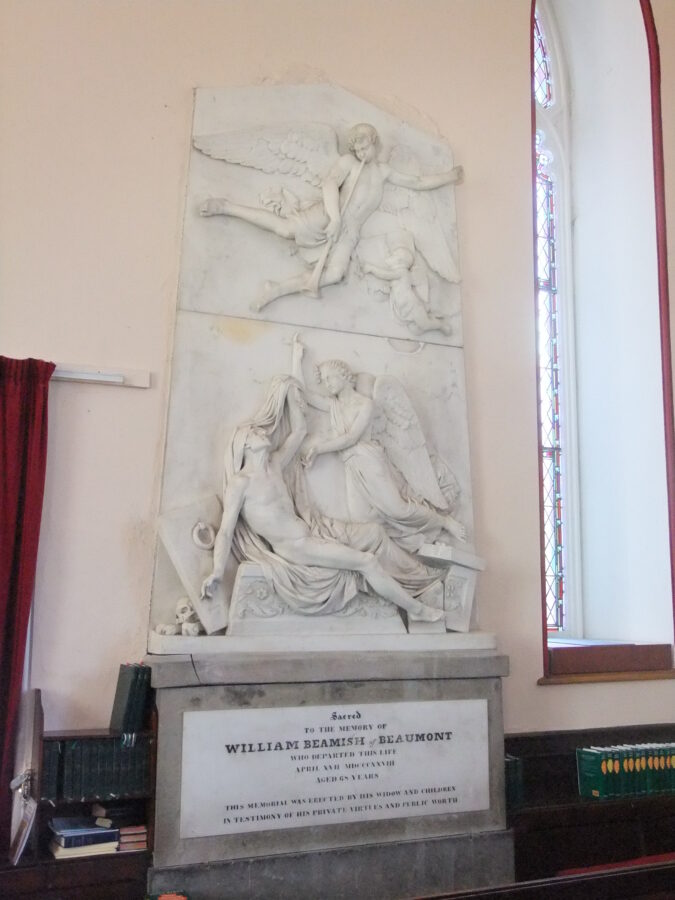
Beaumont House:
By the time William Beamish III in the 1840s inherited Beaumont house, the Beamish family also possessed 5,180 acres in Cork, Tipperary & Waterford, complete with the successful and adjacent Beaumont Quarry.
Beaumont House is marked on the first edition ordnance survey map circa 1840. A visitor to the house, would access the entrance lane from Blackrock Road, now Beaumont Lane and make their way to the lodge house.
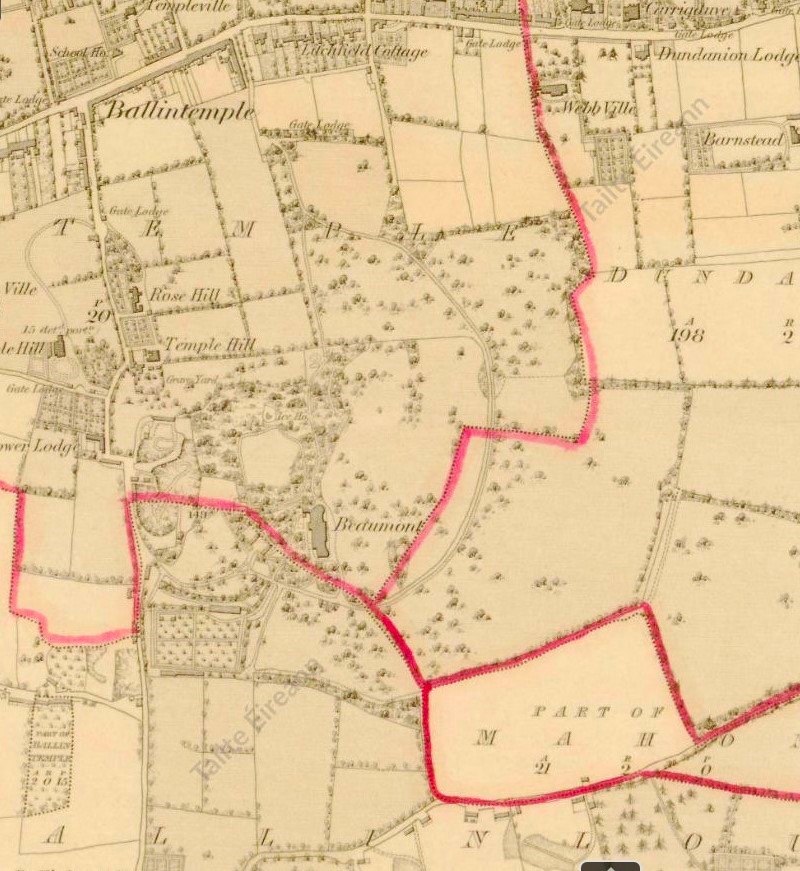
The visitor after the lodge house could choose two routes – a short climb up to the northern end of Beaumont House, or be brought on a sweeping, curving and ascending journey towards the southern end of Beaumont House. During the latter journey, the visitor would have been brought through an impressive lawn area of two to three acres of gardens alongside a walled garden with a sprawling and scenic view of the River Lee and its estuary.
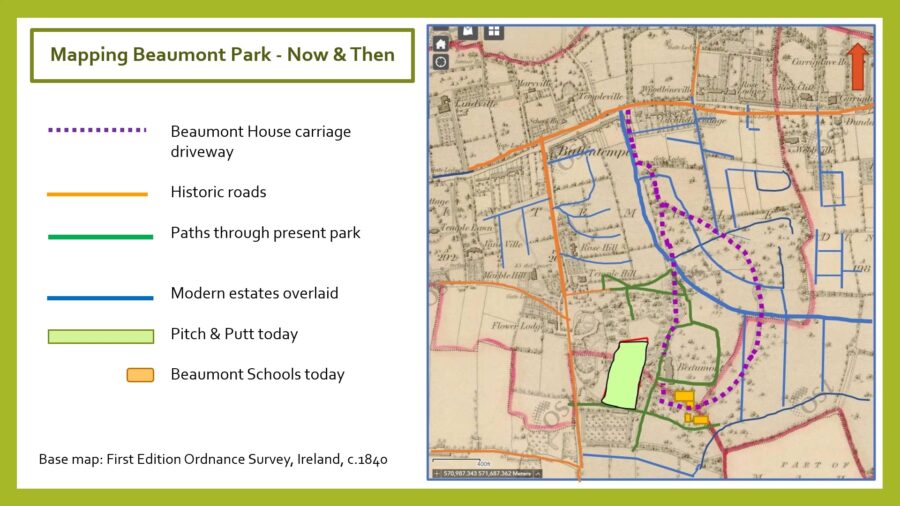
In 1850, the Beaumont House was rated at the Poor Law at £500.


In 1862, Beaumont House and estate was sold to William Shaw, Clergyman and MP for Cork.
An interior auction of Beaumont House on 22 December 1862 shows the opulence of the inside.
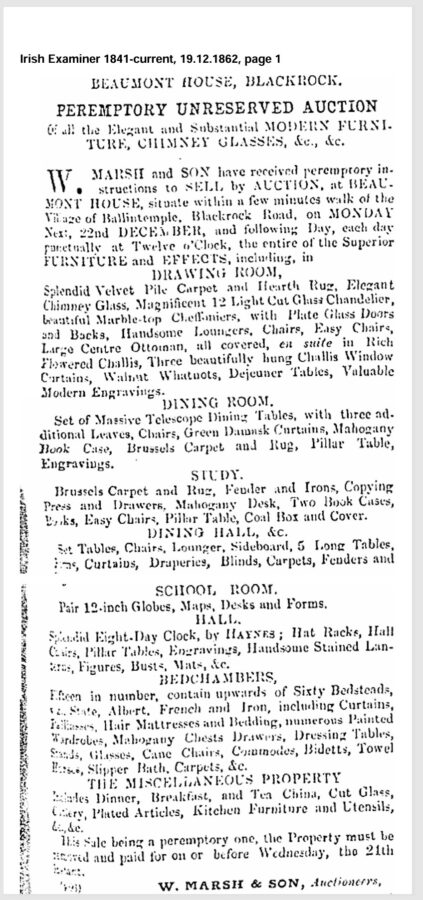
An advertisement for Beaumont House and estate to be let was published on 17 February 1863.
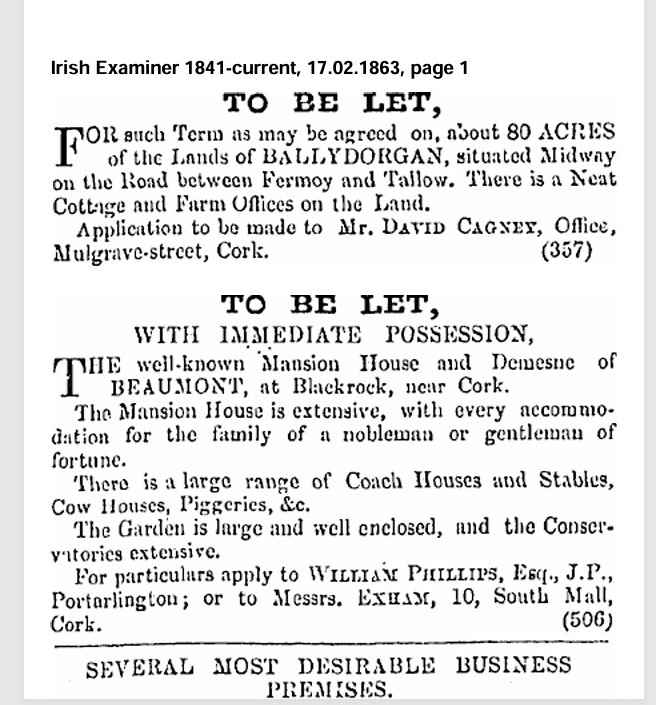
Beaumont Quarry:
In the Beamish estate, the famous 120-acre Carrigmore Quarry or Beaumont Quarry was opened sometime between 1830 and 1850. The particular high grade of limestone associated with this quarry meant it was widely used in the construction of quay walls, bridges, churches, banks and other public buildings within Cork City. This rock is filled with minute fossils, and these, on account of their crystalline character, weather more slowly than does the amorphous material surrounding them, and thus one gets a beautiful veined appearance.
There is quite an extensive network of caves at the eastern face of the quarry. These caves were first explored in the 1960s by the Cork Speleogical Group and a further survey was conducted by the British Cave Research group in the early 1970s. Some of the cave wall passages were found to be abundant in lower carboniferious fossil sea shells and crinoid steams.

Ruins , Public Space & a Public Park:
Beaumont House was a ruin from the 1920s and was demolished in the 1950s. Its site was just to the north west of the Beaumont Schools (see now and then map).
The first public pitch for the Beaumont Estate as a public park was in 1922. Under the column title “Wanted” written under the pseudonym Periscope and published on 20 October 1922, he calls for the Beaumont Estate to be made into a public park. The column, part of which is extracted below, reveals his description of walking around the ruinous house and grounds.
“In the course of an afternoon walk recently I rambled into the grounds of what was once one of the finest places in cork and that occur to me at once with a splendid public park it would make.
The fine old house at Beaumont, Ballintemple Is a sad sight in its present condition. Those who knew this mansion in its former splendid state- say of 40 years ago – Can I put feel deeply regretful at its present neglected and apparently dismantled condition. Beaumont was then one of the finest, if not the finest house in the county…. A representative the best style of its period, he two wings terminated in oblong rooms, giving it a grand expanse of frontage.
The old house has passed from 1 tenant to another declining all the time until I learned it has become a tenement house. The centre portion of the building is practically intact, but the two wings have been dismantled, stripped of roofs, ceilings, floors, all the fine wainscot and other decorations. The valuable mantel pieces have also been rooted out and even the windows removed. Nothing remains, but the bare stone walls.
The lands of Beaumont are particularly suitable for use as a park. They are largely of that undulating character which makes them undesirable as building ground, yet very suitable for the purposes of a public park. They are well timbered. The shrubbing would be a matter of time and opportunity. In the lower part of the demesne, near the road, and there is a level field, which will do admirably for cricket exceptionally and there would be plenty of room for tennis courts”.
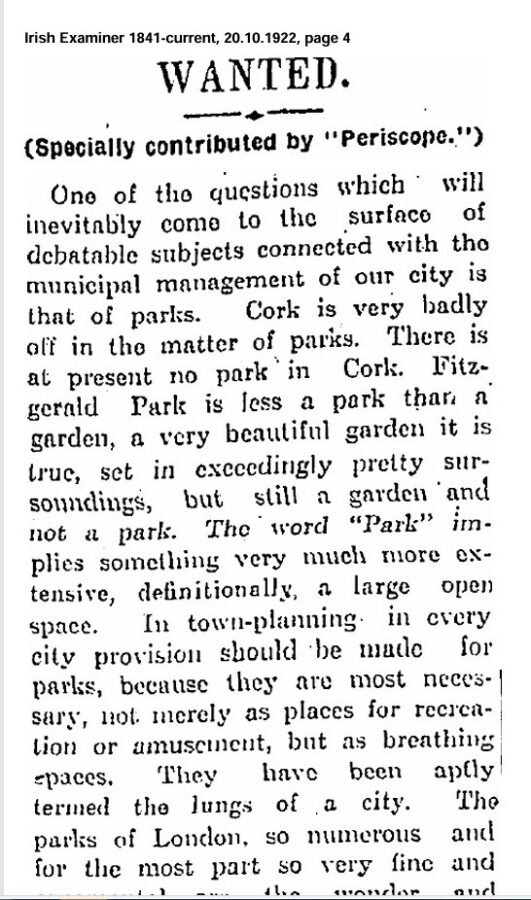
A letter writer, signed HH, in writing to the Cork Examiner on 22 October 1922 outlined;
“Seeing a small ad in the paper announcing the fact that Beaumont House, Ballintemple, was to be let or sold at a rent within our means…we trekked one off evening in a glorious summer to investigate. Beaumont House, Yes, you enter that gap, proceed up the avenue, and there you are and there we were. The avenue was long and winding. Surely it could not belong to a £24 or £30 house. We found ourselves before the mansion described so faithfully by ‘Periscope’ with a spacious, undulating park in front and a fascinating glimpse through the noble trees of the glint of Lough Mahon.
It would require an expenditure of probably over £1,000 to make the house habitable in the first place and then when that was completed, an income of, say, £1,200 a, year to keep it in the style for which it was presumably intended. But Beaumont an a public park, I think is an excellent idea, and “Periscope” deserves well for pointing out its possibilities. Perhaps when conditions begin to become normal again it may not be considered beyond the bounds of reason for your City Fathers to give a thought to the idea adumbrated by your contributor. Cork must have a park again, a real park, not a reclaimed slobland without any beauty in itself, and a thing that was never really a park”.
In 1959, in order to maintain an adequate supply of water to the Marina Industrial Site at all times, a new reservoir was proposed to be constructed at Beaumont in the heart of the old walled garden and new watermains laid from the reservoir to the Site. In October 1959, Philip Monahan, the City Manager, sought the approval of Cork Corporation for the borrowing from the Local Loans Fund of a sum of £55,000 to defray the cost of building the reservoir. Opening in early 1961, the reservoir could host one and quarter million gallons of water.
In 1968, Mrs Lehane began a new school in Beaumont, Cork. Whilst the school was under construction at the time and the first classes were located in pre-fabs in the playground of the Boys’ School. The original number of 30 students started their first day of school on 1 April 1968. The school population grew as the Beaumont area developed and an extension was added in 1974. The schools, as they are today, were completed in 1976.
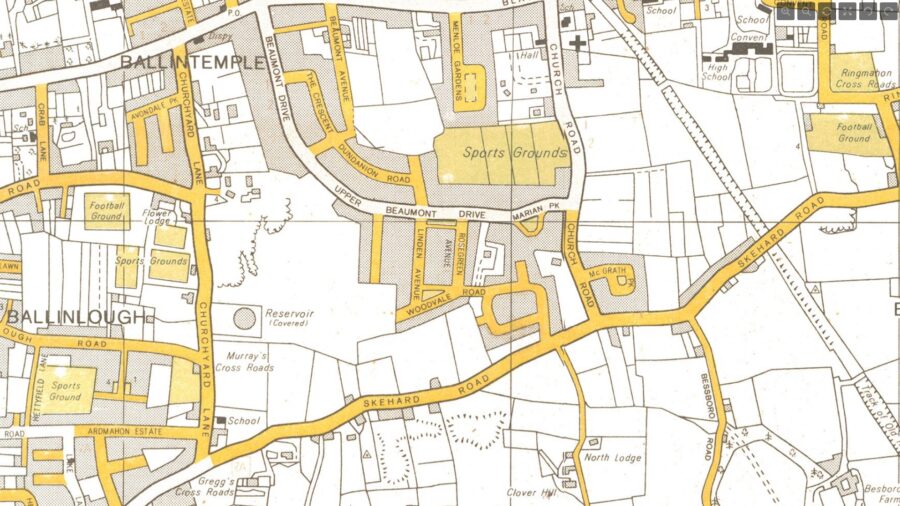
Meanwhile surrounding the schools, in September 1970 the Beaumont Residents’ Association met Cork Corporation’s Roads, Traffic and Planning Committee, and submitted drawings requesting the provision of a community centre, public park and playing pitch. The land required being in the region of 4-5 acres adjacent Beaumont Quarry – on the former estate lands of Beaumont House.
In the 1974, the Cork City Development Plan, provision was made for a public park and pitches. In October 1976, plans were discussed at Corporation level on where paths and additional trees would be laid out.

Beaumont Park in Modern Times:
In 1972, Avondale United was formed in Ballintemple. In the mid-1980s, the use of a community ground was granted by Blackrock Community Association to the Club. This is now the club’s schoolboy headquarters. Close collaboration with Cork City Council in recent years has created a fantastic pitch and club house at Beaumont Park. The pitch is located on the former and immediate front garden of Beaumont House – albeit the gardens in their day were on a slope.
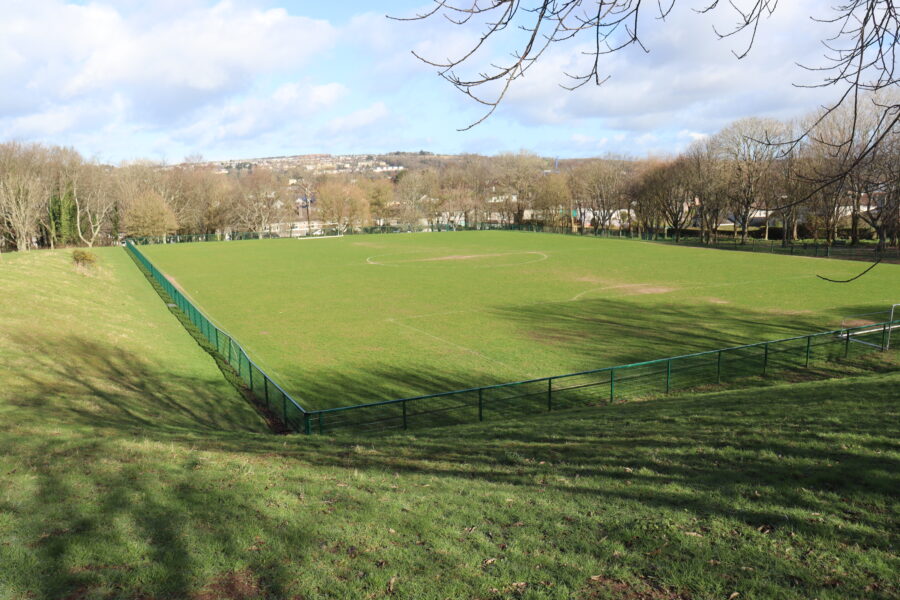
In 1984, Ballinlough Pitch and Putt Club, consisting of the sub-committee, was formed to undertake the conversion of a site adjacent Beaumont Park. They received a 99 years lease from Cork Corporation for a pitch and putt course. Work commenced in August 1984 and 20 greens were constructed by a contractor and seeded in late autumn. These greens were playable in late summer 1985 and a perimeter chain link fence of 60 yards was also constructed.
In recent years, Cork Nature Network has educational programmes and pursues regular clean-ups of Beaumont Quarry. The network’s mission is to protect and promote Ireland’s wildlife through education, conservation and research to restore a healthy ecosystem for all species and habitats in Ireland. Of Beaumont Quarry, they note; “Rare flowers such as the little robin, pale flax and common toadflax flourish amongst the grass and limestone cracks. There are also patches of broad-leaved woodland, wet willow wood, scrub and hedgerow on site providing a wide variety of resources for mammals, birds and insects”.

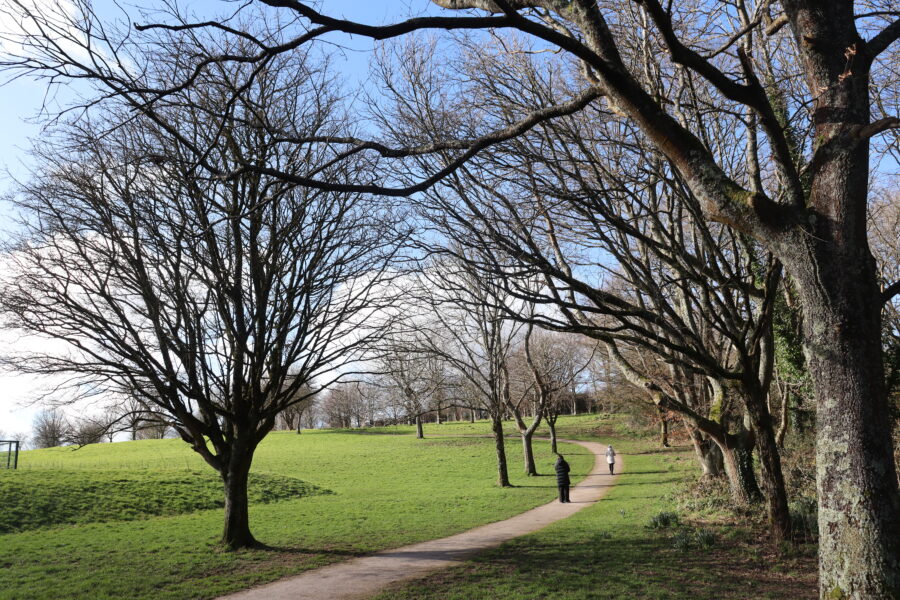
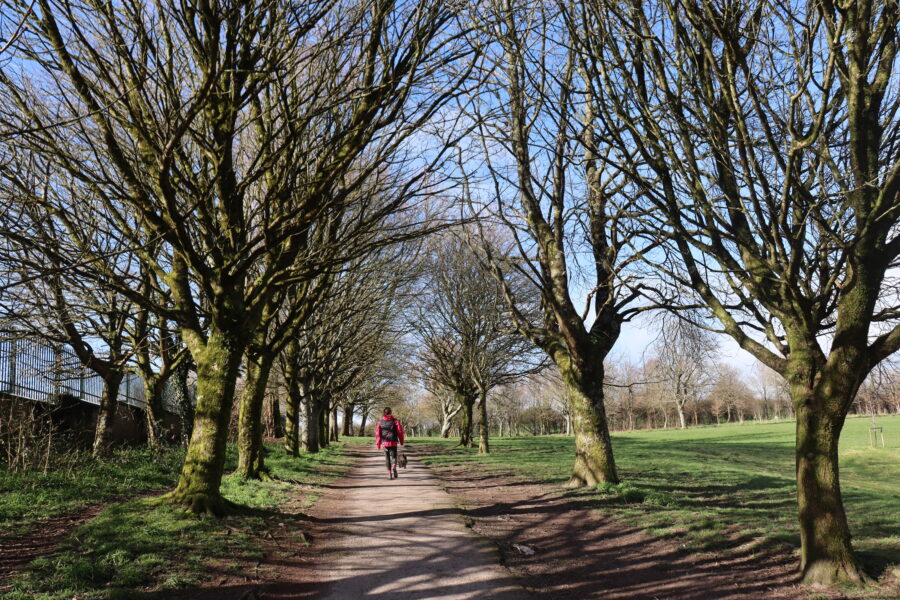
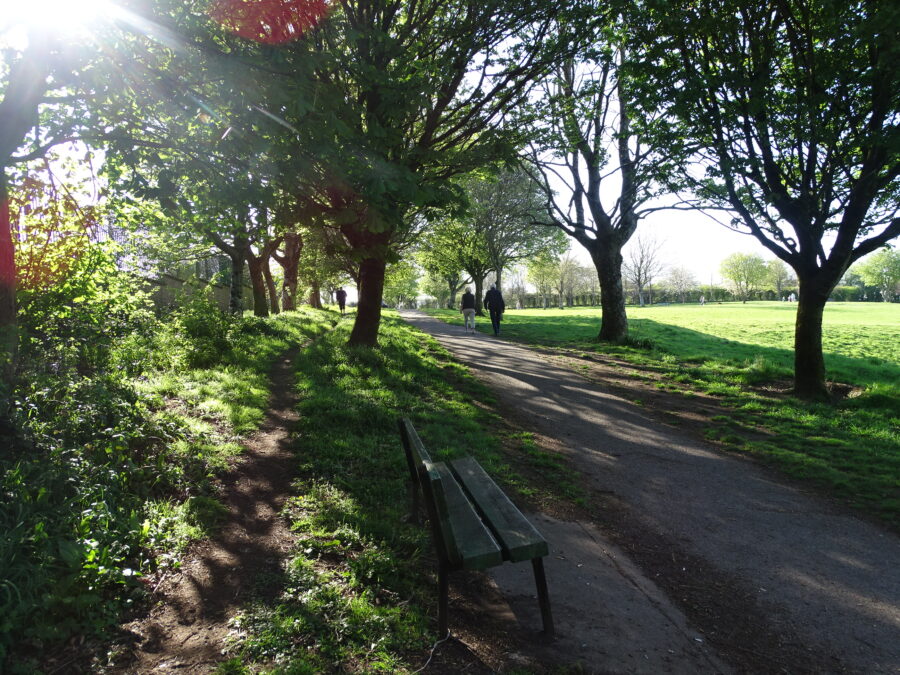


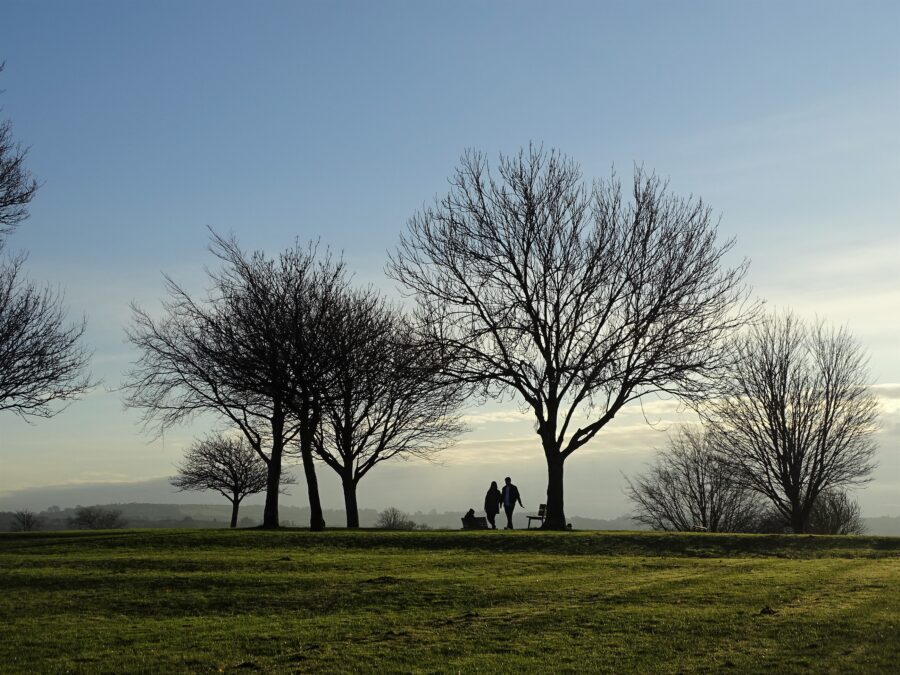
Check out the views from Beaumont Park southwards onto Douglas Estuary and the northern vistas are equally as impressive as they fall onto the Marina and Blackrock areas; plus there is something about the fall of the light in Beaumont Park, which makes it very photogenic.
Read about The Marina here: 6. The Marina | Cllr. Kieran McCarthy